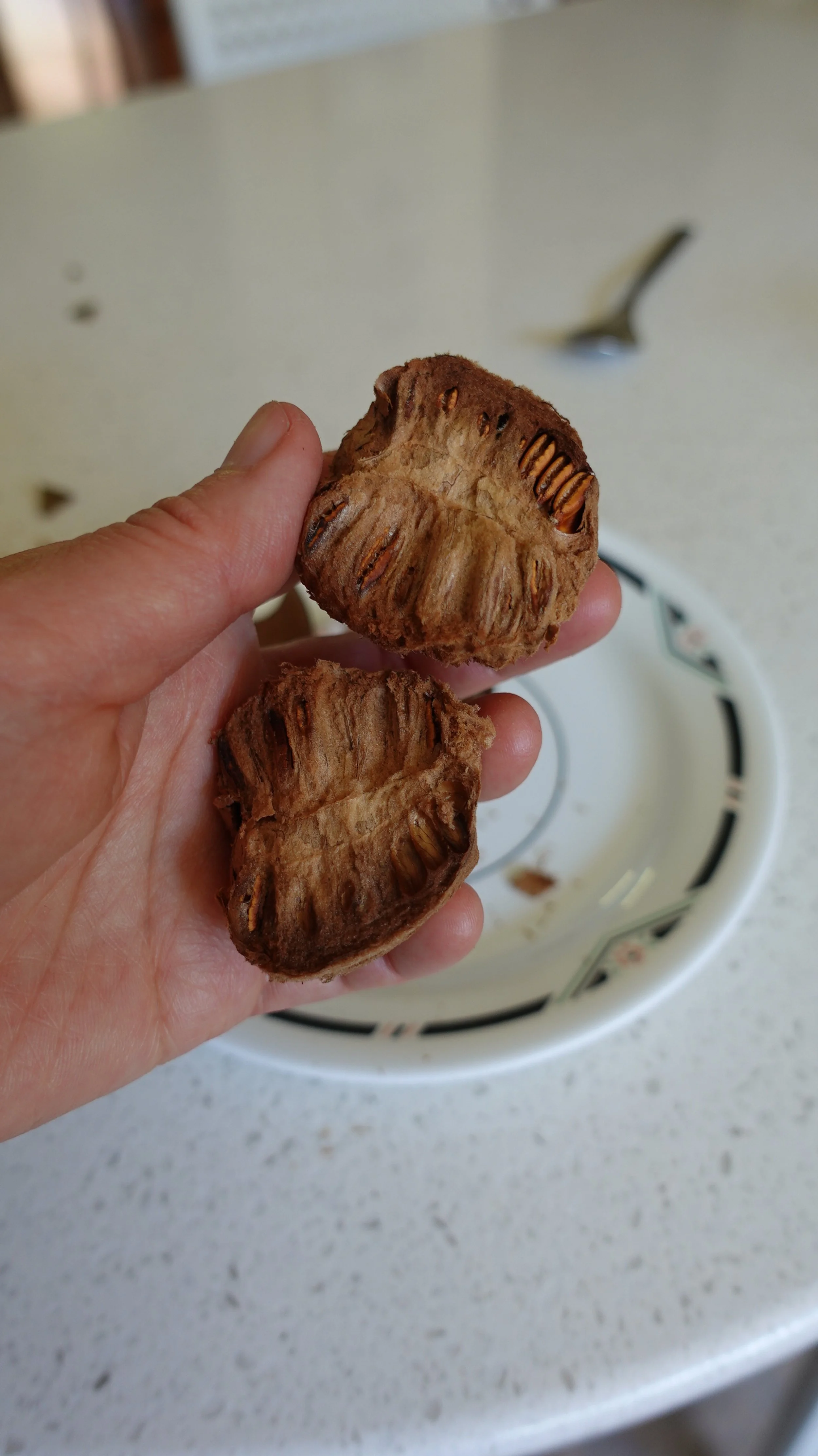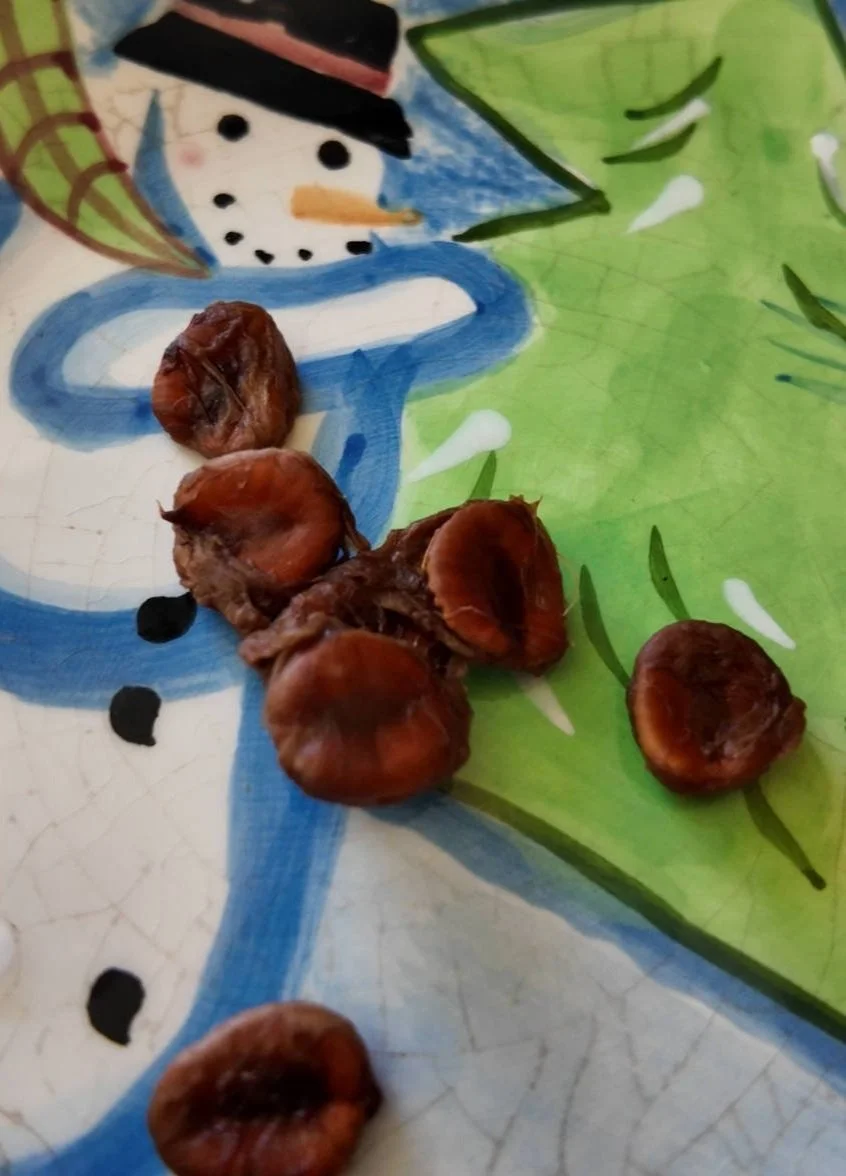Monk Fruit
As part of celebrating AAPI Heritage Month, I’m highlighting a few Asian ingredients that have made their way into my everyday life—and one of my favorite finds is monk fruit, also known as luo han guo (罗汉果).
Dried Monk Fruit
This small, round melon grows in the mountains of Southern China and has been used for centuries in Traditional Chinese Medicine. But only in recent years has it gained popularity in the West, especially among people looking for natural, zero-calorie alternatives to sugar.
What Is Monk Fruit?
Monk fruit gets its name from the Buddhist monks who were the first to cultivate it back in the 13th century. It's part of the gourd family and has been treasured not only for its intense sweetness but also for its cooling properties in traditional herbal medicine—often used to treat sore throats, coughs, and heat-related ailments.
My Monk Fruit Grocery Store Adventure
I actually found monk fruit at my local Asian grocery store, but it wasn’t easy to spot. It was on the bottom shelf, and the packaging didn’t even say “monk fruit” on it—just some unfamiliar Chinese characters. I had to Google the image to make sure I had the right thing!
The pack only came with three monk fruits, but that’s honestly plenty. Each one lasts a long time because a little goes a long way. I snapped a photo of what it looks like in case you’re ever on the hunt too—check it out below!
Monk fruit pacakging in my Asian grocery store
Why Is It So Sweet?
The sweetness of monk fruit comes from antioxidants called mogrosides, not from sugar. That’s why monk fruit has:
0 calories
0 carbohydrates
0 sugar
And it’s up to 300 times sweeter than white sugar, so you only need a tiny bit. Most monk fruit sweeteners on the market are blended with other natural ingredients (like erythritol or allulose) to balance the taste and make measuring easier.
Health Benefits
Here’s why monk fruit is worth adding to your pantry:
Diabetic-Friendly: It doesn’t raise blood sugar levels.
Gut-Friendly: Unlike some sweeteners, monk fruit won’t disrupt your gut microbiome.
Anti-inflammatory: The mogrosides have been shown to have antioxidant and anti-inflammatory properties.
No Aftertaste: Many people find it tastes cleaner than stevia or artificial sweeteners.
How I plan to Use Monk Fruit
Monk Fruit Tea
I love using monk fruit in:
Herbal teas (especially iced!)
Baking (try it in muffins, cookies, or banana bread)
Homemade kombucha or sodas
Sauces and marinades that usually call for sugar
Just remember: it’s super sweet. A little goes a long way.
I usually boil the whole dried fruit in water to make a naturally sweet tea. After boiling, it opens up, and the inside is really interesting—the seeds kind of look like coffee beans! Even after steeping, when I suck on the leftover fruit, it’s still incredibly sweet. That’s how powerful monk fruit is.
A Beautiful Blend of Tradition and Wellness
What I love about monk fruit is that it’s a perfect example of traditional wisdom meeting modern wellness. Something that’s been cherished in Chinese culture for generations is now finding new life in healthy kitchens around the world.
It’s a reminder that so many of the answers we seek—whether for wellness or sustainability—already exist in cultures that have long respected nature and balance.




